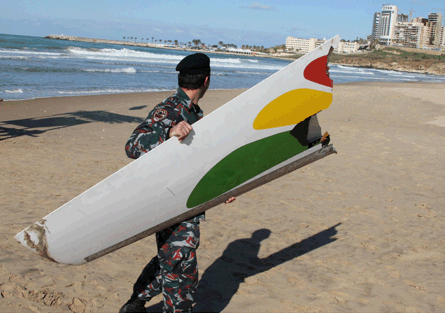The loss of an Ethiopian Airlines Boeing 737-800 near Beirut is the latest in a series of fatal accidents with common characteristics. There have been seven since 2000, they have killed 976 people, and in every case the accident happened over the sea at night.
That grisly tally is evidence of a phenomenon that needs to be addressed urgently. So far nobody except Flightglobal has been seriously airing this subject.
Although little detail about the Ethiopian accident is officially established, a great deal is known about the context. The circumstantial similarities with other accidents in this septet cannot be ignored. And the international division of Ethiopian Airlines has an impeccable safety record. This carrier is not one of those that gives Africa a bad safety reputation.
 |
|---|
© Rawan/Rex FeaturesEthiopian crash is similar to seven others since 2000 |
What binds these accidents together is not only that they took place over the sea at night, it is also that among all those in this group for which full accident reports exist, pilot disorientation was cited as a cause - and disorientation is more likely to happen in darkness over the sea because there is often no reliable external visual reference even when the visibility is good. All it takes is momentary distraction for the pilots, and disorientation can insinuate itself.
The two preceding crashes apparently most similar to the Ethiopian accident are the Gulf Air Airbus A320 event near Bahrain in 2000, and the Flash Airlines Boeing 737-300 accident over the Red Sea in 2004. Both were carrying out climbing turns at night with no reliable external visual reference, and both were the result of loss of pilot control following disorientation. In the Bahrain case, somatographic illusion also contributed to disorientation because of the aircraft's linear acceleration associated with the go-around it was performing.
In the Ethiopian case the aircraft started its departure from Beirut with a climbing turn over the sea at night, almost certainly still accelerating. Shortly after that it failed to perform accurately a simple traffic separation manoeuvre ordered by air traffic control. It disappeared from Beirut radar with no explanation from the pilots.
Climbing turns at night, especially those that begin soon after take-off and entail a sudden transition from the striking external visual environment of the airport and runway lighting into the black hole of over-sea darkness, have always been an accident waiting to happen to pilots whose risk awareness has lapsed. That there are so many lapses is a training system failure. This is more about avoiding upset than it is about upset recovery.
Source: Flight International






















